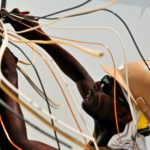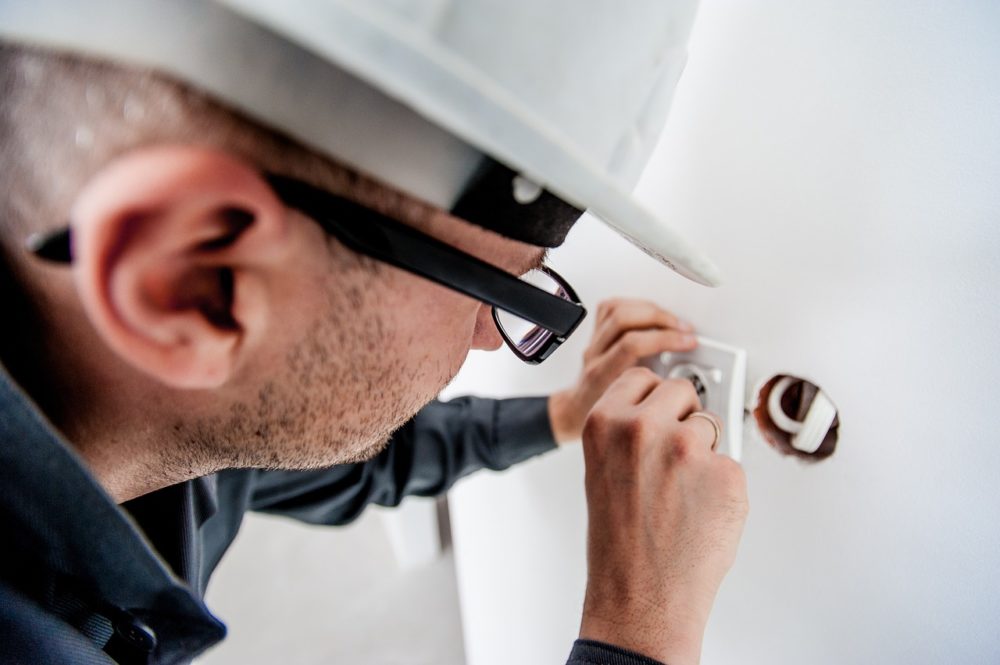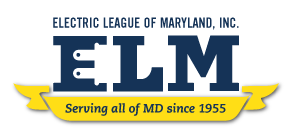Author: ElectricLeague
President’s Message
The school year has ended, and all the new journeypersons are now first year electricians. This is a wonderful achievement for each and everyone who helped them over the past four years. Be proud you have done it and now you will be helping others. You can teach what you learned to your brother or sister or friends, inspire them to learn as you have.
The new 2020 Code is currently being written and you are still struggling with the 2017 Code. Remember every three years they change the rules!! This is why we must get our CEUs. That means, you never know everything; as your mother told you, keep learning.
The trade you have chosen is moving very fast, but the pipe and wire must be installed properly not half fastened. Computers and robots can’t work without you!! You are a strange breed; the American electrician is a very ingenious person. You must know every other trades’ work so you can move their job out of your way, then neatly replace it.
The work we do is easy and challenging. You can work hard or work smart. Once you do something wrong, learn not to do that again!! Remember, we buy wire by the foot, others sell it by the pound! Be careful when spending your money or your boss’ money. Order material smart. Keep control over it as it is your money. A loss of material is coming out of your pocket either directly or by not getting a raise because your boss lost money due to your action.
The Electric League of Maryland is here to help you learn. We are working with groups now teaching code and giving CEUs. We have negotiated a discount on their classes. We will have a list of participating groups with pass codes to get a discount for being a member of the League.
Keep plugging safety. Remember to watch for our Lunch & Learn classes and annual Bull Roast.
Keep learning!
Peter Elmo
President, Electric League of Maryland
March 2019 News & Notes
Did you know?
That up to the mid 1920’s there were more electrical vehicles in use than gas powered ones? They were used as town delivery trucks, provided the means around town for transport and for taking short road trips. The electric cars and trucks gave most town people the freedom to not be restricted by tracks or permanent pieces of public transportation such as streetcars and overhead trolley lines.
…..And then came the movement of many people to the suburbs, and this new lifestyle made electrical vehicles lose most of its appeal. Electrical Vehicles did not have the range or the speed of the gasoline powered vehicles and you were, at that time, restricted to lengthy charging times for batteries.
Now, it seems that the electrical vehicle industry is making a strong comeback, which will challenge all of us now and into the future. Electrical vehicles (EVs) will provide less pollution (cleaner air); they have increased in speed and acceleration, increased in their range (no longer are you restricted to just a short trip), the batteries have been improved with shorter charging times, and they provide an answer to helping the electric grid by some of them being able to put power back into the grid system. To be sure, the cost is coming down drastically, and there are special rates for charging at off peak demand times and rebates to make them more attractive.
Opportunistically, you are receiving a special flyer about the Electric League’s Lunch and Learn scheduled for Thursday, March 28 from 11:00 a.m.to 2:00 p.m. at the BGE Energy Sales and Service Building in Woodlawn (see attachment).
China is becoming our chief competitor in the electric vehicle market and has made many innovative changes that make US car manufacturers take notice. We have begun to manufacture special hybrid vehicles (small city EV’s). We are researching new type batteries for swift charging and developing “smarter” charging equipment. Fortunately, Mr. Schumacher will discuss this in more detail on March 28.
Another incentive for owning and operating electrical vehicles is receiving rebates, as indicated by recent decisions by the Public Service Commission of Maryland.
Residential Program: BGE is authorized to provide rebates to 1,000 residential customers for smart chargers, up to $300 per customer. The utilities are authorized to provide EV-only time of use rates using the EV charger as a sub-meter to the overall household use.
Commercial Program: BGE is authorized to provide approximately 700 rebates for smart charging equipment to multi-unit dwellings (MUD). The Commission is looking into special rates for workplace, fleet, and other applications. The Commission approved a proposal to provide limited duration bill credits to offset demand charges associated with EV charging.
Public Charging: The Commission approved BGE construction, ownership and operation of 500 public charging stations.
Don’t Forget – There is a Maryland Law that requires all public charging stations to be designated with proper signs and have a green colored outline so that the space is designed for its purpose (similar to a requirement for handicapped parking spaces).
NOTE: At a special Board of Director’s Meeting, it was decided that all corporate members of the League will be given a 10% discount for all of the company employees who attend the March 28 seminar. This is certainly a bargain! Don’t miss it!
Gil Thompson, News & Notes Liaison
Legislative Updates

At the May 2017 meeting of MUELEC, the ad hoc group working on revisions to the State Electrical Master’s Examination, reported that the work is well advanced and will be completed by the November 2017 meeting.
After its review and approval by the Uniform Exam Committee, the new examination will be printed for distribution to the Electrical Administrative Boards who are testing for the Master Electrical License. NOTE – all examinations for Master Electricians will be given on questions that are based on the 2017 National Electrical Code beginning January 1, 2018.
The company (PSI) giving examinations for the State Electrical Board has once again raised the issue that they feel that some exam questions are too difficult. On their own, they have eliminated some questions and tried to change the values on others.
After a lengthy discussion by all electrical administrative boards present, a motion was made and unanimously passed that the Maryland Master Electrical Exam questions must be given as constructed by the MUELEC organization. They must be used as originally formulated and formatted: 50 one-point questions; 10 – two-point questions, and 6 five-point questions.
The director of DLLR was dually notified of this action and has promised that PSI will stop their present procedure and follow MUELEC’s direction. MUELEC will not allow the test to be dumbed down and before the new 2017 test is distributed, all Electrical Testing Boards will be required to follow MUELEC questions and instructions.
Also at this meeting, the state-wide journeyperson licensing procedures were again discussed in detail. A resolution was made to hold any legislative action until a properly written bill could be distributed to all electrical boards, trade representatives, and any other affected parties. Some work is being done to try to get an official bill writer, make the necessary changes, and have a written copy so that a legislative bill can be introduced that will try to find solutions to the various problems raised.
The State DLLR also clarified that a statement has been added to the form that the State sends for their master license renewal. It will require a signed statement that the necessary ten hours of continuing education has been accomplished prior to the renewal of any two-year Master Electrician’s License.
No authorized papers will be required at the time of renewal; however, DLLR may randomly audit the signed affidavits and if complaints or problems arise, then written verification must be submitted or the license will be suspended until the necessary papers can be produced. We understand that the audit will be done on a 20 percent basis.
Fire Protection News

For years, we have always been informed that elevators should not be used in case of fire.
However, in recent years, high rise buildings have been increasing in height – some as high as 450 to 1,000 feet. There is new talk about allowing protected and safe shafts and stairwells (2-hour, fire-proof construction) and special fire-proof construction for equipment that will now allow elevators to be used in a high-rise fire.
Consideration is given, however, for the length of travel on the steps and sometimes limited access (there are firefighters coming up the steps while occupants – some with handicaps – are trying to go down). Concern has been expressed about people propping open the doors of the affected area so that smoke penetrates the ventilated stairwell which makes visibility limited.
There are new proposals such as horizontal safety areas (again, constructed with 2-hour fire-resistant materials) that must have emergency lights and proper ventilation being required at different levels in the building. To be sure, some people may not be able to traverse 40 and 50 stories at a time without resting.
These are new, innovative ideas in building construction which will allow elevators and their shafts to become fire escapes. These must have ventilation, emergency lights, special protection for the traveling cables and special protection will be required at the call button stations to ensure the integrity of the system. This new idea will allow some designated elevators to be used for escape by handicapped, disabled, and special needs people. Also with the Testing and Tagging system which involves attaching a label to the appliance or cable that shows when it was last tested and when it needs to be retested. Testing and tagging help protect both people and equipment in the workplace by minimising the risk of an electrical hazard, such as an electric shock or fire.
As you can see, electricians will have to understand the work required within the building and work with building and fire authorities (who has very good information to help people to prevent fire accident in the future) to guarantee that all equipment meets minimum fire safety requirements. This involves identifying the various systems (maybe something different than red), special planning for voice control so that people can be properly directed, and special safety requirements for the emergency generators of these systems for the integrity of lights and motors. Questions have even been raised about the integrity of grounding and bonding of these special pieces of equipment and systems. For instance, unless you have all threaded connections one must make sure that a wire-type equipment grounding/bonding conductor is used because some systems using just slip joints or pressure are not reliable.
As you can see, many, many changes are occurring in the electrical industry. We must be prepared by being skilled and educated enough to protect those around us and to bring a high level of integrity to our vocation.
A Challenge to the Electric Industry

- Have you noticed that some high schools may not be delivering consistently qualified candidates to the exciting and rewarding electrical industry? Is there apathy toward vocational training and the electrical trade? Sometimes it feels this way when reading job vacancy postings and talking with others in the field.
- To meet deadlines and to staff some job sites, do you have to borrow qualified workers from other electrical contractors (if possible) or use labor pools (who sometimes send unqualified help) just to get the job done?
- Have you found that qualified, skilled, journeypersons have been decreasing in numbers recently and over the past few years?
- Is it because of retirements or are some journeypersons just reluctant to take over the responsibility of supervising electrical installations? Sometimes they just seem to want someone else to do it!
- Does it concern you that you must spend valuable effort, expense, and unnecessary time trying to institute innovative ways to improve your hiring process?
- If no other jobs are available, do young people of today want to enter a situation of just hands-on only without training their minds to advance or benefit others?
- Do people want the monetary benefits of a position or classification without the work and commitment necessary to achieve advancement or certification in a trade or vocation?
- Are we in a real labor shortage now and will there be a catastrophic one in the near future?
If this is the challenge, then as an industry, we had better find a solution and try to fix it as soon as possible. Maybe all of us should become ambassadors for our industry.
We all can recruit and convince future workers that the electrical trade is never boring. It is a great way to earn a decent living and there will always be a demand for a skilled tradesperson.
In order to recruit for anything, you must know the subject or product you are trying to sell. To convince someone to join us, you must love the subject or the product itself and be able to highlight all of the perks and economic benefits.
First of all, the subject or product to which we wish to attract others is really easy to define. Without electricity, where would all of us be in the timeline of our culture and society?
Rushing or moving water, hydro-dams, coal, natural gas, oil, special wood, wind, solar, and other alternate power sources can be converted into useable, electrical power. Generation stations, transmission facilities, transformation to usable voltages, motors, appliances (view Seal Beach page to know more about it detail about each appliances), industrial machinery, signs, lights, receptacles, computers, etc., are all kinds of inventions designed to protect and advance lives in a safe, comfortable, easy and convenient style. Again, where would the world be without electricity?
We have to convince young, middle-aged, and older persons that the electrical industry is a concept where hands may produce the work or product seen, but it is the mind that produces the advanced equipment that helps everyone lead that more productive life. Surely, a creative mind can come up with ideas to improve existing conditions or foster new ways of doing any task. Aren’t we only bound by our imaginations as to what can be electrically invented to make life better, faster, and more economical?
People who can join the electrical trade must know that an educated individual is a person who can really listen and really see what makes things operate and work. Reasonable costs for schools and apprenticeship training programs are at their fingertips – all they have to do is enroll so that they learn and advance in the trade.
They then must put this knowledge and training into practice so they can produce a product that will earn them a better than average salary and thus a better than average living standard. The electrical industry itself has evolved so that incentives such as a decent healthcare plan, reasonable paid sick and vacation times, and advancement for work produced are usually part of any hiring package. Applicants should know that workers who are drug-free, honest, dependable, and hardworking will achieve well- paying jobs.
To be sure, electrical contractors and firms must also learn that workers must be trained in all aspects of the trade rather than just putting them in one specialized area. Electrical workers must be well-versed and willing to know all aspects of the industry.
YES – we must all recruit and convince future workers that the electrical trade is filled with opportunity for advancement, job security, and excellent salaries for those who take the electrical trade seriously.
Codes and Controls 2.0

Click here to view the PowerPoint presentation on ASHRAE 90.1-2013, IECC 2015 and Title 24 2016 from the IEE, IAS, IES Baltimore meeting in February 2017.
Code Corner-March 2017

Here it is – a N.E.C. code change year and it seems that our trade is becoming more complicated as the years progress. Can you imagine that there were 4,100 public comments to change or amend the 2014 NEC?
Nineteen code-making panels reviewed these proposals and then looked at 1,513 public comments before sending their report to the correlating committee. The correlating committee reviewed, changed, and organized recommendations and sent the 2017 NEC document to the technical meeting of N.F.P.A., which approved and issued the new code as an American National Standard in August of 2016.
Various National Committees and organizations promulgated the information to the electrical industry in late September 2016. Code change magazines, courses, and illustrations are out in full force and most are covering 559 major changes, as well as five new articles.
- Article 425 – Fixed Resistance and Electrode Industrial Process Heating Equipment
- Article 691 – Large-Scale Photovoltaic (PV) Electric Power Production Facility
- Article 706 – Energy Storage Systems
- Article 710 – Stand-Alone Systems
- Article 712 – Direct Current Microgrids (DC Microgrids)
Did you know there are 30 different applications to raise the standard voltage of electrical systems from 600 to 1,000 volts? This has occurred because it is needed for new products, innovative ideas, and new systems (D.C. systems are coming back into vogue).
New Rules:
- Changes about accessibility and location of equipment and worker’s workspace safety have been changed (keys and special tools – read this section carefully).
- Guidelines for the establishment of credentials and certification of persons, firms, laboratories, etc. that examine and label equipment or systems have been expanded. Even standards have been set now for equipment that has been reconditioned and then put back into service.
- Proposed standards for the torqueing values and applications for the termination of electrical conductors are now required so that manufacturer’s instructions will be met for termination reliability.
- For the first time, the minimum number of outlets that will be required to provide power for apparatus or material used in public meeting rooms for seminars, educational information, and demonstrations will become part of the new electrical code.
- There is a clarification of the need TO GROUP all service disconnecting means when multiple electrical supplies are used (now, even dwellings are included).
- To coordinate with the National Safety Code, there have been new regulations for the support and clearance needed for overhead service conductors in railroads, transportation facilities, and terminals.
- To also coordinate with the mechanical codes, the receptacle for indoor electrical service areas now will be required to be located in an accessible area and in the same room and within 25 feet of the service equipment.
- Identification for ungrounded conductors of different wiring systems must be LABELED as to their ratings at all termination, connection, and splice points.
- Be informed that the 15 and 20 ampere rated receptacles for GFCI protection of personnel has been expanded in commercial and industrial applications to now include receptacles rated 150 volts to ground or less to 50 amperes for single phase and 100 amperes for three-phase systems. Special trip device units rated at 20 MA instead of the regular class A 6 MA will have to be used.
- The requirement for a separate branch circuit for electrical outlets that service electric vehicles was relocated to Article 625 – Electrical Vehicles. However, there is still no requirement that one must be installed at dwellings and commercial establishments. You must check with the builders to see the necessity of such an outlet – note: there probably will be a code change for this in 2020.
- New provisions have been added to 210.12 (C) requiring AFCI protection for all 120 volt single phase 15 and 20 ampere branch circuits supplying outlets and devises installed in guest rooms and guest suites of hotels and motels regardless of whether or not they have permanent provisions for cooking.
As you can see, these are just a few of the changes to the National Electrical Code; we’d have to print a whole book to include them all! I would suggest that you go to a Code Change Course, see Power Point illustrations, and obtain illustrated code change books. As an example, major changes have occurred for swimming pools and fountains in similar locations (Article 680). See illustration.
So many changes – you may want to go to a special seminar on nothing but 680 and 682!
Additionally, in photovoltaic, article 690, there are so many changes (see diagram) that you might wish to attend a special class for Article 690 that covers nothing but Article 690.
Belonging to the Electric League of Maryland will be advantageous, as we are developing courses that will help you better understand the National Electrical Code.
Gilbert Thompson
Electric League Board Member
Legislative Update- Spring 2017

As I reflected on some of the advantages of being a member of the Electric League of Maryland, it made me realize how committed, industrious, innovative, professional, and progressive are those who make up our trade.
As individuals, we bring special talents that have established an organization of the electrical industry that promotes public safety, protects special interests, and provides for everyone’s objectives. Whether you represent individual electrical contractors, electrical contractor’s associations, apprentice training programs, serving utilities, manufacturers, engineers, inspectors, administrative officials, communication and security, lighting associates, legislative officials…you are given an opportunity to serve on the Board of Directors and provide a voice in your particular work category.
New products, new developments, new concepts and new and legislative changes for the industry are constantly being monitored so that critical information can be provided that will improve understanding and cooperation among all segments of our industry.
The diverse membership of our Board of Directors assures the main objective of enhancing the professional standing and increased knowledge of all our tradespeople. We ensure a code of ethics that protects the life and property of the public.
Additionally, a wealth of information is shared with members through our News and Notes. Consider these various educational opportunities: code and code change courses; specialized subjects such as solar, alternative power methods, arc flash protection, energy and low voltage signaling systems, generators, swimming pools, etc. – classes are offered at reduced prices, with special discount when you are a member of the League.
Think about the positive effect the League has had on legislative action across the State – the League has helped establish the first State-wide Master’s License, the first State Electrical Board, and the first effort at continuing education. There are proposals for establishing State-wide apprentices and State-wide journeypersons that will once again benefit all industry members as they train to become more professional in their careers.
This past legislative season the League joined in the efforts to defeat Senate Bill 1368. The Bill would have abolished all local Electrical Boards, made all electrical work installed be under the control of a Master Electrician, and disrupted our industry. We supported St. Mary’s County effort to begin the process to make their Electrical Administrative Board come under local control. The Electric League drew attention to changes to the way DLLR would be funded and is making effort to ensure electrical licensing and examination fees are not increased. Also, close attention was given to a Bill to make a State police permit mandatory statewide. We want to make sure local permits are maintained and reasonable fees charged so the local jurisdictions will have the authority to still protect the public.
Discussions are taking place to expand and develop different concepts in the League’s educational opportunities for the future. A new category of membership may be developed (of course, at a reasonable increase of cost) that will help reduce the cost of continuing education for Master’s and journeypersons and save valuable time. There will be specially designed courses that will include: code issues, business skills and requirements, and special installation techniques that will incorporate technological advances (on-line training will be counted).
What a benefit to belong to such an organization at a reasonable cost ($35 annually). If you are not a member, you should be!
Sincerely,
Gilbert Thompson
Legislative Committee Chairperson, Electric League of Maryland
News & Notes

Latest news, updates, and industry trends effecting the electrical industry in Maryland.
Click here to read our most recent issue of News & Notes!
